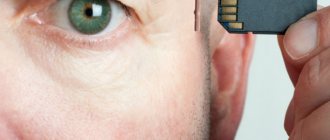During the period of night rest, people rarely sleep in one position. They move their legs and arms, roll over from side to side, jerk their limbs, or generally shudder. Often they don't even notice it.
What causes muscle spasms? Is this a physiological need or the cause of a possible disease? This feature is called by scientists as hypnagogic twitching or nocturnal myoclonus.
In 70% of the population this is a physiological feature. Most often occurs at the initial stage of sleep. It has no symptoms, goes away on its own and, only in isolated cases, is pathological.
Possible reasons
The brain sometimes thinks that it is dying when it falls asleep.
Doctors have been studying the problem of shuddering at the moment of falling asleep for a long time. Today, 4 theories have been developed as to why tremors appear in the body when falling asleep. They look like this:
- Dying states - the brain, while falling asleep, identifies changes in the body as dying and takes actions to restore active functioning. Muscle contractions occur in order to activate blood circulation in the body and the person shudders intensely. During this same period, most people experience nightmares (usually falling from a height or diving under water without the ability to emerge). Such artificial stimulation of danger projected onto a person is produced by the brain to release adrenaline, which should improve the condition. This explains most cases of why a person twitches at night.
- The transition from the stage of shallow sleep to deep sleep - during the period of deep sleep, the human body completely relaxes. If there is excess energy in the muscles, at the moment of transition from one phase of sleep to another, they are discharged by twitching. Extremely rarely, a seizure may occur.
- Stress – when stress is chronic, and negative thoughts and emotions accumulate over a long period of time, the brain begins to analyze them during the period of falling asleep, although consciousness is already turned off. Due to this activity, nerve impulses are strengthened, which leads to tissue vibration before sleep. Most often they wake up in such a situation.
- Lack of oxygen - if the oxygen content in the air is low, then the muscle cells begin to experience its deficiency, which is why the brain sends impulses that cause their contractions. This is necessary because at the moment of shuddering, blood circulation in the tissues increases and they receive the required amount of oxygen.
Most often, flinching is one-time in nature and does not appear regularly. In this condition, a person usually does not seek medical help, since twitching does not bother him.
Symptoms in children
Parents can pay attention to how the baby twitches its legs during the transition to sleep. Don't panic
It should be remembered that the baby’s sleep structure is different from ours. This is explained by age and different stages of development of the body - the older the person, the more complex all the processes. The duration of deep sleep for an adult is two to three hours, while for an infant it lasts approximately one 50-60 minutes. Deep sleep is replaced by shallow sleep, and during this transition the baby may flinch. That is, twitching during the superficial phase indicates that the child is simply dreaming. Myoclonus can also occur in children during adolescence. This period of life is characterized by active reorganization of the body, so sometimes malfunctions in the functioning of the nervous system can occur.
Myoclonic spasms
Myoclonic seizures appear in different places in the body each time
Myoclonic seizures occur for various reasons and are noted as irregular twitching of the arms or legs just before sleep or immediately after falling asleep. The following reasons cause myoclonic spasms when falling asleep:
- brain asphyxia;
- abrupt termination of sedative medications;
- abrupt termination of taking hypotonic drugs;
- mental disorders;
- degenerative processes in the cells of the nervous system;
- depression.
"Restless Legs"
Restless legs syndrome is another common cause of startling in sleep, which can wake the sleeper. It most often affects adults over 35 years of age, although young people are not immune from it. The phenomenon is caused by the fact that unpleasant sensations arise in the legs, which a person does not detect in a dream, but the brain gives a command to eliminate them. As a result, muscle contraction occurs, which improves blood circulation and eliminates discomfort. This explains why the legs twitch.
It is unlikely that you will wake up with restless legs, but if this happens, then congestion is already strong
Waking up in such a situation does not occur often, since the sleepers do not startle much, and this does not lead to changes in body position. However, the quality of sleep is greatly deteriorated, since the deep sleep phase is constantly disrupted due to vibration. Because of this, even after a rest of 8 hours, a person feels weak and general malaise. Such twitching occurs mainly at night. Awakening in this situation can only occur if congestion in the limbs is intense and the movement to eliminate them is strong.
The following causes the problem:
- lack of iron in the body;
- renal failure;
- diabetes mellitus – only type 2;
- Parkinson's disease;
- complications after surgery on the stomach and upper intestine;
- pinching of the spinal cord processes;
- varicose veins;
- severe hormonal imbalances in the body;
- venous insufficiency of the lower extremities;
- arthritis of the leg joints;
- pathologies of the cardiovascular system;
- disorders of the thyroid gland;
- traumatic spinal cord injuries.
Quite often, the appearance of “restless legs” syndrome is associated with pregnancy, when the enlarged uterus compresses the veins and impairs blood circulation in the legs, which causes twitching. If there are no other pathologies, then the condition is not dangerous and resolves itself after the birth of the child.
In cases where awakening occurs regularly when starting during sleep, the cause should be sought in defects in protein metabolism or alcohol abuse.
Prevention
The leg twitches involuntarily in patients of different sexes and ages, so it is better to follow the rules that will reduce the risk of developing diseases that provoke the regular occurrence of such a disorder. The first stage is the normalization of the diet, enriching it with greens, red meat, fresh fruits and vegetables.
These products contain iron and other valuable components. In addition, you should increase the amount of liver, eggs and dairy products in your diet. Patients prone to anemia are advised to regularly donate blood for clinical testing. This will allow deviations to be detected at an early stage.
With regular loads on the lower limbs, it is necessary to do short warm-ups from time to time to restore blood flow and prevent stagnation. Patients, especially women suffering from pathologies of the blood vessels of the legs, are recommended to use compression stockings, which keep the blood vessels in good shape.
Patients with spinal diseases are recommended to devote time to physical activity. You should not overload your muscles, but simple exercises will help normalize blood circulation and the passage of nerve impulses. All patients who regularly report involuntary muscle contractions should visit a neurologist once every 6 months.
Twitching in epilepsy
For patients with epilepsy, shuddering at night is quite common. More than half of patients suffer from it. Convulsive attacks occur at night and cause awakening. They tend to progress and intensify as the underlying disease develops. Gradually, the tremors are completely replaced by focal attacks.
Startling when falling asleep in adults can affect either one muscle group or several. They have attacks and a tendency to migrate, when contraction occurs, either in the leg or in the arm.
Possible complications
If left untreated, complications may develop.
The most common ones are:
- Transition of the condition to the chronic stage.
- Necrosis of nerve tissue.
- Paralysis of a limb
- Muscle fiber atrophy.
- A nervous disorder caused by the constant manifestation of a symptom.
- Chronic insomnia.
- The appearance of trophic ulcers on the skin of the extremities.
There are many more complications that can arise due to the pathological origin of involuntary contraction of the leg muscles.
Muscle fibers in people can contract involuntarily as a result of various provoking factors. The right or left leg twitches frequently, but the symptom may occur rarely. Treatment is prescribed depending on the underlying disease and associated abnormalities.
Article design: Vladimir the Great
Sleep paralysis
Sleep paralysis is when you wake up, but cannot move because the brain has decided that you are still asleep
. People who suffer from startling during sleep sometimes also experience such an unpleasant phenomenon as sleep paralysis. With it, a person is unable to move, experiences an acute feeling of lack of oxygen and a strong fear of death. Visual and auditory hallucinations also often appear. What makes the condition especially serious is that the victim at this moment cannot call for help, since the tongue is also paralyzed.
The phenomenon occurs due to the fact that coordination between awakening and the beginning of physical activity is disrupted. In fact, a person wakes up, but the brain has not yet registered this and does not send signals to the muscles to begin active work. In order to eliminate the phenomenon as soon as possible, a person must realize what is happening to him. As soon as this happens, the brain actively turns on and everything returns to normal.
The problem is solved by normalizing sleep and rest patterns and reducing stress loads. When the problem of sleep paralysis is eliminated, the nighttime tremors also disappear.
Types of myoclonus
Hypnagogic contractions that occur during sleep can be compared to electric shocks. They can be divided into two large groups:
- physiologically;
- pathological.
The syndrome of involuntary jerking of the limbs at night during sleep is called myoclonus. The type of contraction will depend on the condition of the muscles, the duration and intensity of the manifestation, and the general nature of the trembling. Thanks to these characteristics, you can understand whether this is normal or pathological.
Ways to eliminate flinching
First of all, it is necessary to establish whether night tremors of the limbs are associated with natural causes or diseases. To do this, if it is impossible to identify it on your own, you should first contact a therapist. After the initial examination, he decides whether the patient needs treatment and referral to a specialist, or whether his condition is not dangerous.
If the presence of diseases is established, against the background of which the flinching appeared, it is necessary to correct them. For this, the person is referred to a specialized doctor, who determines the method of therapy. For some, a light sedative before bed is enough (for increased nervous excitability), while for others, lifelong maintenance therapy is needed (for diabetes, etc.).
You need to drink more water - regular, not carbonated
Patients must improve their drinking regime. This is due to the fact that if the body does not receive enough fluid, a person develops chronic dehydration. Because of this, the blood becomes excessively thick and night twitching of the body, legs or one leg occurs, which should improve metabolic processes in the tissues. The easiest way to fix this problem is. It is enough just to drink 6 glasses of clean water without gas every day, not counting liquid food, tea and coffee.
For epilepsy, the use of antipsychotics is indicated to eliminate night shudders or microseizures. They allow you to correct the state of the nervous system and eliminate the problem.
How to get rid of twitching in your sleep?
It should be immediately noted that if the syndrome is caused by pathological causes (for example, epilepsy), then you will not be able to solve the problem on your own - you must contact a qualified specialist who will make the correct diagnosis and prescribe the necessary treatment.
In the same case, when twitching occurs for physiological or external reasons , you can try to get rid of such manifestations by following the recommendations given below.
- Limiting vigorous physical activity . Try not to overload your body with heavy, monotonous work. If this is impossible, then pay more attention to rest, use protective equipment (support belts, corsets, etc.). Strong physical activity before bedtime is especially contraindicated - it should be completely avoided;
- Be calm and balanced . Try to avoid stressful situations, do not become depressed. If you can’t get rid of your problems on your own, make an appointment with a psychologist and undergo the necessary course of therapy;
- Ensure maximum rest at night . Thick curtains and drapes, good sound insulation, maximum comfortable thermal conditions - prepare in advance;
- Take multivitamin complexes . In some cases, frequent twitching during sleep can be caused by a lack of minerals, trace elements and vitamins. Take vitamin and mineral complexes on a regular basis, especially during periods of acute shortage of nutrients - in autumn, winter and spring.
When there are no diseases
If a person who regularly shudders in his sleep is not diagnosed with illness, work must be done to eliminate severe evening overload of the body, ensure relaxation of the body and relieve nervous tension. There are many simple and pleasant ways to do this.
Half an hour before bed, take a bath, maybe with essential oils
- Warming - when the body is warm, the body does not need to activate blood circulation, and, therefore, twitching is unnecessary. In the evening, 30-40 minutes before bedtime, it will be useful to take a bath with essential oil. The water temperature should not be too high to avoid overheating, but sufficient for pleasant warming. The duration of the procedure is 20 minutes. You can’t lie down immediately after a bath; you need to sit for 10-15 minutes. This is necessary to restore normal heart rhythm.
- Evening walks - when twitching of the limbs occurs due to energy not wasted during the day, walking in the fresh air helps. They speed up metabolic processes and burn remaining energy, which will lead to problems when falling asleep. The walk should last 30-40 minutes. There is no need to strain your body and walk fast or even run. You need to dress in comfortable, warm clothes according to the season so as not to feel the cold.
- Eliminating screens before falling asleep - TV or computer negatively affect the brain in the evening, overloading it with information and awakening it with its intense light. As a result, when falling asleep a person is not in a sufficiently relaxed state, which is why shudders develop. It is better to read a book (paper only) 2 hours before bedtime. You can also do handicrafts and painting.
In the vast majority of cases, the problem of night shuddering does not pose a danger to a person, does not require treatment and is effectively corrected when the rhythm of life changes. Sleep becomes normal, spasms, twitching and vibrations disappear.
| Share: |
Similar materials
Helpful tips on how to sleep peacefully
Healthy and restful sleep, unfortunately, is not available to every modern person - according to statistics, about half of the world's population has some kind of problem with falling asleep and quality rest at night.
However, if you listen to the tips below, you can significantly improve your overall sleep quality and feel great in the morning.
- Counting time . Healthy sleep is 8 full hours of night rest. Try to distribute your time rationally, do not sit at the computer until late at night, leave unfinished tasks for the morning;
- Normalize your circadian rhythms . It is advisable to go to bed and get up at the same time. The optimal time to go to bed is no later than 10 pm. If you cannot fall asleep by this time, then it is better to skip daytime naps, but get a good night's sleep;
- Moderation in everything . During the waking period, try not to overload yourself physically and emotionally, take regular breaks;
- Adjust your diet . Eating at night is very harmful to the stomach and sleep. At least 3 hours before the night's rest, do not eat food, give up too fatty, fried and unhealthy foods, replacing them with vegetables, fruits and juices. Eat small meals, at least 5 times a day. Forget about coffee and black tea before bed;
- Relax . A set of relaxation activities before bed at home includes a light walk for no more than 30 minutes, a comfortable warm shower or bath with aromatherapy, massage, and good sex;
- The best microclimate and bed . Choose a reliable, comfortable bed with an orthopedic mattress and pillow, a comfortable blanket and bed linen made from natural materials. Maintain the temperature in the bedroom at about 18 degrees, ventilate it regularly and humidify the air in the room.











